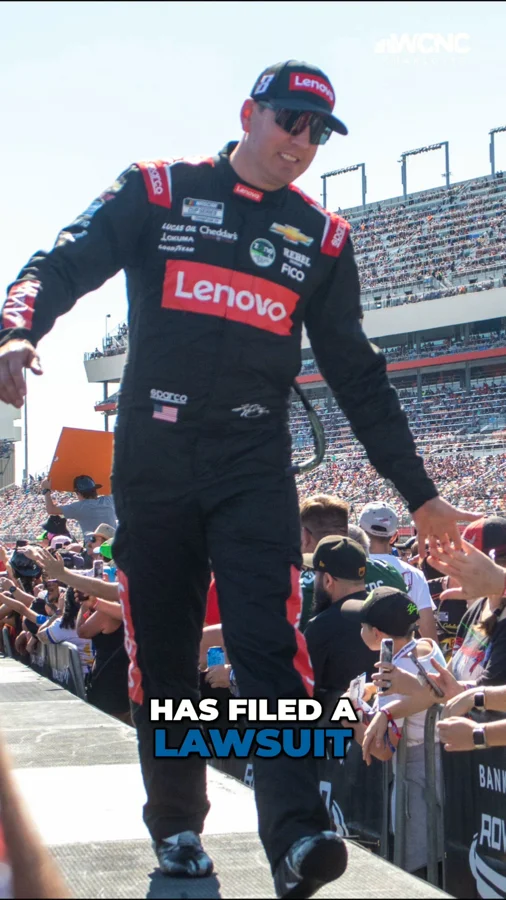Kyle Busch, the celebrated NASCAR Cup Series driver, has initiated a high-profile legal battle after falling victim to a financial disaster involving a life insurance investment. The Kyle Busch insurance lawsuit was filed when he discovered that millions invested with Pacific Life Insurance had all but vanished, triggering shock and concern in both the racing and financial worlds.
Battling outside the racetrack, Busch and his family were enticed by what was marketed as a safe and strategic life insurance plan, only to find themselves in financial turmoil. Their experience has ignited questions about transparency, risk, and accountability in the insurance industry.
Kyle Busch’s Investment: Hopes, Promises, and Shocking Discoveries
Busch, a two-time champion renowned for his competitive drive, took what he believed were sound steps to secure his and his family’s financial future. Together with his wife, he opted for an Indexed Universal Life (IUL) policy offered by Pacific Life Insurance, a product advertised as a way to create a tax-free retirement income over time.
The plan outlined an annual payment of $1 million for five years, ultimately designed to provide Busch with $800,000 a year once he retired from racing. However, confusion arose when Busch was unexpectedly billed for a sixth year of premiums on what was only supposed to last five years.
“I was like, wait a second, what am I getting a sixth-year premium payment for?”
said Busch. Confronting the policy’s sales agent, Busch was met with evasive responses and mounting suspicion.
“We got on a call with the guy who sold me the premium policies, and he ran me around in all these circles, couldn’t answer the questions, so I was like, this is fishy,”
he added. —Kyle Busch, NASCAR driver
Alarmed by the inconsistencies, Busch launched an investigation and soon realized that most of the $10.4 million he and his family had poured into the policy was gone. An independent firm’s assessment uncovered another devastating fact: the policy was on the verge of expiring within 16 months, threatening to erase their entire investment.
Initial representations implied that Busch’s funds would be invested in the stock market to accrue gains. In reality, the majority of his investment sat stagnant within Pacific Life’s accounts, earning almost nothing.
“I looked at it was like, this sounds too good to be true, but you’ve got to believe in those that are looking at it for you and trusting in the people with Pacific Life email addresses that are sending you the documents.”
—Kyle Busch, NASCAR driver
Legal Action Reveals Hidden Risks and Complexities
With financial losses mounting, Busch and his wife have filed an $8.5 million lawsuit against Pacific Life, alleging misrepresentation and the concealment of serious risks tied to their insurance policy. The legal complaint also singles out Rodney A. Smith, the agent who facilitated the sale, for steering them toward a high-risk product while securing a commission reportedly as high as 35 percent.
Reports from within the insurance industry offer a deeper layer to the controversy. Observers claim the very structure of Busch’s policies was flawed from the outset, designed in a way that drained approximately 90 percent of their value within the initial decade. Due to his profession’s inherent risks, Busch’s premiums were a staggering 12 times above those for standard policyholders. Instead of fostering long-term investment growth, a substantial share of his premiums went directly to cover costly insurance charges, leaving little for wealth accumulation.
The damage was compounded by the meager 1.5 percent interest rate assigned to most of Busch’s premiums, drastically limiting returns. Despite sinking over $10 million into four policies, three of them lapsed from lack of projected value, exposing even further the harmful design and incentives at play. This arrangement appeared primarily to benefit the agent, as perpetually high premiums meant enormous commissions at the expense of the insured.
The Fallout and Industry-Wide Implications
Kyle Busch’s alarm has not fallen on deaf ears, serving as a wakeup call throughout the insurance and sports communities. His legal challenge against Pacific Life appears to have drawn attention to the pitfalls characterizing certain complex insurance products like IULs.
Legal representatives for Busch have noted similar complaints emerging from other consumers who bought the same type of insurance.
“These insurance companies are too big to be messing with the little people, so we’re going to go at them,”
Busch’s attorney confirmed.
“It’s not just race car drivers or athletes or rich people of the world and this is why we’re going public with it.”
—Busch’s Attorney
Pacific Life has thus far declined to comment in depth on the case but has maintained that the company is committed to fairness and integrity. For Busch, the battle is not just about recovering personal financial losses but also about warning others and demanding greater oversight and transparency from the insurance sector.
The case underscores risks even well-resourced individuals can encounter with intricate financial products, especially when information is incomplete or misleading. Outcomes from the Kyle Busch insurance lawsuit could impact industry practices and safeguard future policyholders, as more affected consumers come forward and scrutiny on companies like Pacific Life intensifies.
Only took a day for an industry insider with access to the IUL illustrations to do a deep dive as to how @KyleBusch lost $8.5m on these IUL policies…
High level deets…
– 4 IUL @pacificlife PDX/2 policies
– Likely $75-100m of death benefit ($62m on 2 policies)
– $10.9m of… https://t.co/1wHFqAPu0L— ex-LP Investor (REIT Bagholder) (@LPInvestor) November 4, 2025


